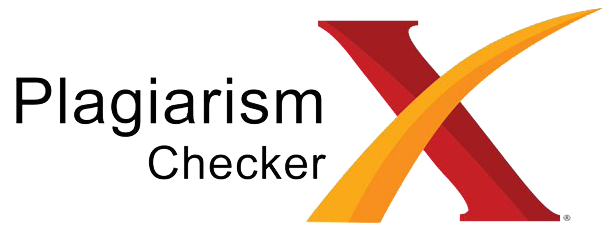Perbandingan Residual Income Model Dan Free Cas Flow To Equity Model Dalam Penilaian Saham
Sari
Keywords: Stock Valuation; RIM, FCFEM, Absolute Percentage Error
Teks Lengkap:
Download PDFReferensi
Afriani, E., & Asma, R. (2019). Analisis Valuasi Harga Saham Dengan Price Earning Ratio, Free Cash Flow To Equity Dan Free Cash Flow To Firm Pada Perusahaan Manufaktur. Jurnal Sains Manajemen Dan Kewirausahaan, 3(2), 111-123.
Brigham dan Houston. (2013). Dasar-dasar Manajemen Keuangan Terjemahan buku satu. Edisi 11. Jakarta: Salemba Empat.
Chen, S., & Dodd, J. L. (2001). Operating income, residual income and EVA™: Which metric is more value relevant?. Journal of managerial issues, 65-86.
Damodaran, Aswath. (2002). Investment valuation: tools and techniques for determining the value of any asset. 2ndEd. New York: JohnWiley & Sons, Inc.
Dechow, P. M., Hutton, A. P., & Sloan, R. G. (1999). An empirical assessment of the residual income valuation model. Journal of accounting and economics, 26(1-3), 1-34.
Dimitriou, M. (2012). Applying the Free Cash Flow to Equity Valuation Model in Coca-Cola Hellenic. In Accounting and Finance Conference Proceedings (Vol. 4, pp. 22-30).
Feltham, G., dan J. Ohlson. (1995). “Valuation and Clean Surplus Accounting for Operating and Financial Activities”. Contemporary Accounting Research, Vol 11, No.2, 689-731.
Florensi, V. (2019). Analisis Fundamental Saham-saham Perusahaan Sektor Industri Barang Konsumsi dengan Menggunakan Residual Income Model dan Free Cash Flow Model. Accounting and Business Information Systems Journal, 7(3).
Gardner, J. C., McGowan Jr, C. B., & Moeller, S. E. (2012). Valuing Coca-Cola using the free cash flow to equity valuation model. Journal of Business & Economics Research (JBER), 10(11), 629-636.
Hartono,Jogiyanto. (2017). Teori Portofolio dan Analisi Investasi. Edisi ke 3. Yogyakarta: BPFE.
Heinrichs, N., Hess, D., Homburg, C., Lorenz, M., & Sievers, S. (2013). Extended dividend, cash flow, and residual income valuation models: Accounting for deviations from ideal conditions. Contemporary Accounting Research, 30(1), 42-79.
Higgins, H. N. (2011). Forecasting stock price with the residual income model. Review of Quantitative Finance and Accounting, 36, 583-604.
Jiang, X. and Lee, B. S. (2005). An Empirical Test of the Accounting-Based Residual Income Model and the Traditional Dividend Discount Model, The Journal of Business, July, 78 (4), 1465 -1504.
Jumran, A., & Hendrawan Sr, R. (2021). Stock valuation using discounted cash flow method with free cash flow to equity and relative valuation approaches on state-owned banks listed on IDX for 2021 to 2025 period projection. International Journal of Science and Management Studies (IJSMS), 4, 191-201.
Kusumanisita, A. I., & Minanti, F. H. (2021). Stock Valuation Analysis of Dividend Discount Model, Free Cash Flow to Equity and Walter Model in Investment Decision. Agregat: Jurnal Ekonomi dan Bisnis, 5(1), 78-96.
Lundholm, R., & O'keefe, T. (2001). Reconciling value estimates from the discounted cash flow model and the residual income model. Contemporary Accounting Research, 18(2), 311-335.
Ohlson, J. 1995. “Earnings, Book Values, and Dividends in Equity Valuation”. Contemporary Accounting Research, Vol 11, No. 2, 661-687.
Pandya, B. (2019). Application of Free Cash Flow to Equity Model in Valuing Mahindra Group Companies: An Empirical Study. SJCC Management Research Review, 74-86.
Penman, S. H., & Sougiannis, T. (1998). A comparison of dividend, cash flow, and earnings approaches to equity valuation. Contemporary accounting research, 15(3), 343-383.
Puspitasari, R., & Megaster, T. (2018). Analisis valuasi harga wajar saham dengan metode free cash flow to equity (fcfe) dan metode relative valuation pada saham-saham idx30 tahun 2012. Dynamic Management Journal, 2(2).
Siregar, Syofian. 2014. Metode penelitian kuantitatif dilengkapi dengan perbandingan perhitungan manual dan SPSS. Jakarta: Kencana.
Tandelilin, Eduardus. (2010). Analisis investasi dan manajemen portofolio. Yogyakarta: BPFEE Yogyakarta.
Tiwari, R., & Singla,H.K. (2015). Do combining value estimates increase valuation accuracy? Evidence from Indian chemical industry. Journal of Accounting in Emerging Economies, 5 (2), 170–183.
http://www.idx.co.id. Diakses 12 Juli 2022
http://www.ksei.co.id. Diakses 3 Agustus 2022
http://www.bi.co.id. Diakses 28 Juli 2022
https://id.investing.com/.Diakses 3 Agustus 2022
DOI: https://doi.org/10.37531/mirai.v8i1.3878
Refbacks
- Saat ini tidak ada refbacks.



